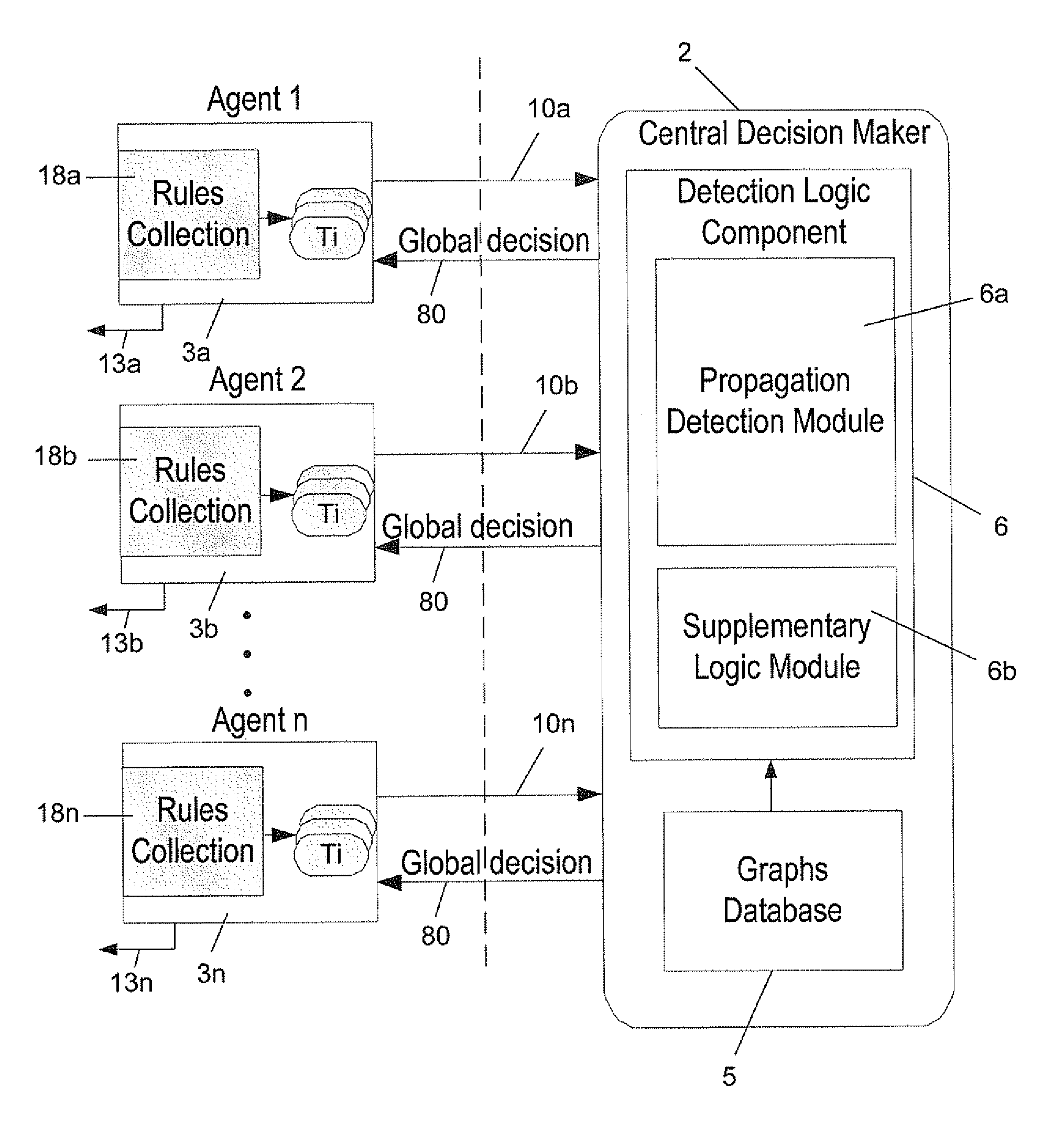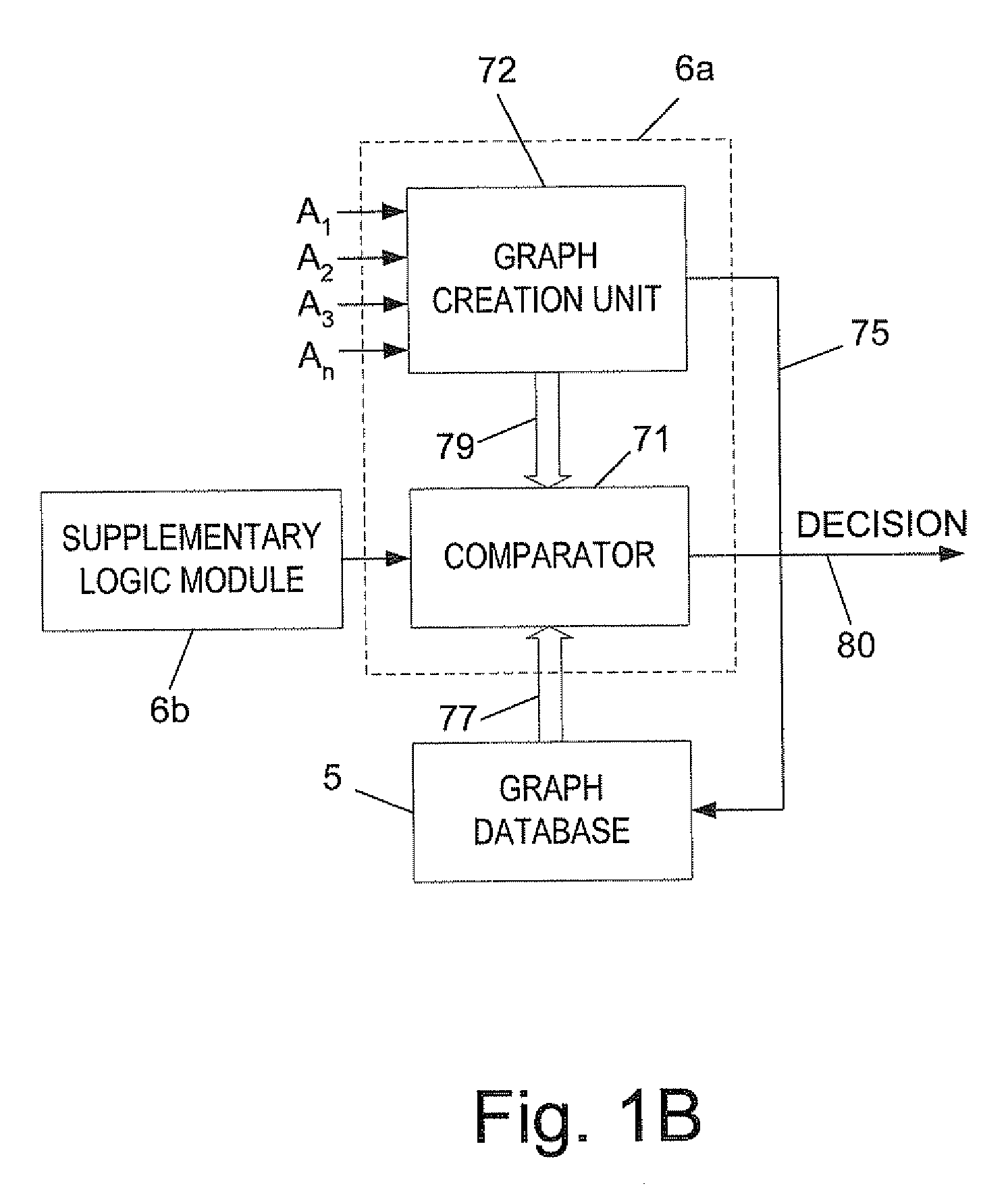Distributed system and method for the detection of eThreats
a distribution system and worm detection technology, applied in the field of system for detecting illegal software code, can solve the problems of expensive and slow process of manual signature extraction, inability to detect only specific types of worms, and expensive training of behavior analysis methods
- Summary
- Abstract
- Description
- Claims
- Application Information
AI Technical Summary
Benefits of technology
Problems solved by technology
Method used
Image
Examples
example
[0098]FIG. 10 illustrates in block diagram form the structure of a simulation unit 60 that has been designed to evaluate worm detection according to the present invention. The CDM 2 was implemented in a manner as described above. The simulation unit has simulated the propagation of various worms throughout a network and has further simulated the agents' behavior. In general, the simulation unit has been designed to perform the following tasks:[0099]1. Simulate the propagation of Internet worms, Email Worms, and P2P Worms by the corresponding models 63a-63c; [0100]2. Simulate the propagation of a legitimate software by model 64;[0101]3. Generate and send agents' reports to the CDM within the unit upon “appearance” of new executables at the “hosts” that are monitored by said agents according to the agents percentage (the agents percentage defines the number of agents in the network relative to the total number of hosts in the network).
[0102]The simulation was focused on the propagatio...
PUM
 Login to View More
Login to View More Abstract
Description
Claims
Application Information
 Login to View More
Login to View More - R&D
- Intellectual Property
- Life Sciences
- Materials
- Tech Scout
- Unparalleled Data Quality
- Higher Quality Content
- 60% Fewer Hallucinations
Browse by: Latest US Patents, China's latest patents, Technical Efficacy Thesaurus, Application Domain, Technology Topic, Popular Technical Reports.
© 2025 PatSnap. All rights reserved.Legal|Privacy policy|Modern Slavery Act Transparency Statement|Sitemap|About US| Contact US: help@patsnap.com



